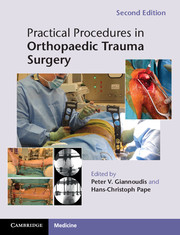Book contents
- Frontmatter
- Dedication
- Contents
- List of Contributors
- Preface
- Acknowledgements
- Part 1 Shoulder girdle
- Part 2 Upper extremity
- 3 Section I: Fractures of the proximal humerus
- 4 Section I: Fractures around the elbow
- 5 Section I: Fractures of the proximal radius
- 6 Fractures of the wrist
- 7 Section I: Fractures of the first metacarpal
- Part 3 Pelvis and acetabulum
- Part 4 Lower extremity
- Part 5 Spine
- Part 6 Tendon injuries
- Part 7 Compartments
- Index
4 - Section I: Fractures around the elbow
Published online by Cambridge University Press: 05 February 2014
- Frontmatter
- Dedication
- Contents
- List of Contributors
- Preface
- Acknowledgements
- Part 1 Shoulder girdle
- Part 2 Upper extremity
- 3 Section I: Fractures of the proximal humerus
- 4 Section I: Fractures around the elbow
- 5 Section I: Fractures of the proximal radius
- 6 Fractures of the wrist
- 7 Section I: Fractures of the first metacarpal
- Part 3 Pelvis and acetabulum
- Part 4 Lower extremity
- Part 5 Spine
- Part 6 Tendon injuries
- Part 7 Compartments
- Index
Summary
Indications
Unreconstructable comminuted distal humerus fracture.
Elderly, low-demand patient (>70 years).
Osteoporosis.
Note
Lack of expertise in fixation of these fractures does not equate to the fracture being unreconstructable. Refer to a more experienced surgeon for fixation if necessary. The results of TEA are better than ORIF in the elderly. The results of revision of a failed fixation to a TEA are inferior to a primary TEA.
Contraindications
Infection.
Lack of soft tissue coverage.
Age under 70 years.
Non-compliant patient.
Neurological injury afecting the elbow lexors.
Preoperative planning
Clinical assessment
Full history and examination. Document status of radial, ulnar, median and posterior interosseous nerves individually.
Exclude associated injuries.
Radiological assessment
Plain radiographs of the elbow: anteroposterior and lateral views (Fig. 4.1.1).
A CT scan is oten very helpful to deine the pattern of fracture and the extent of intra-articular comminution.
Up to 2 cm of humeral shat bone loss can be addressed using standard implants. Greater than 2 cm of bone loss requires the use of implants with extra-long anterior flanges.
Determine the humeral and ulnar canal diameters to conirm that they can accommodate the implants.
Preoperative consent
Obtain informed consent from the patient, including but not limited to risks, beneits, alternatives, complications and potential outcome.
- Type
- Chapter
- Information
- Practical Procedures in Orthopaedic Trauma Surgery , pp. 74 - 91Publisher: Cambridge University PressPrint publication year: 2014



